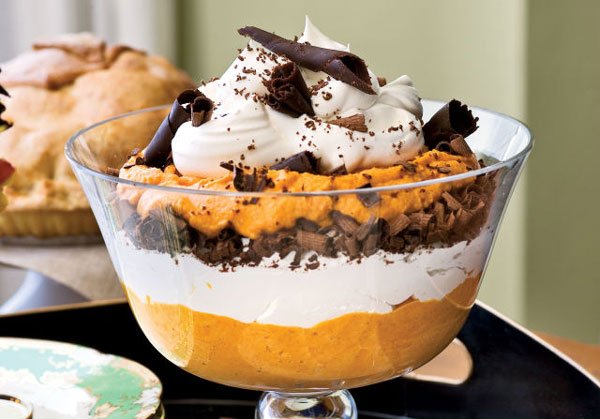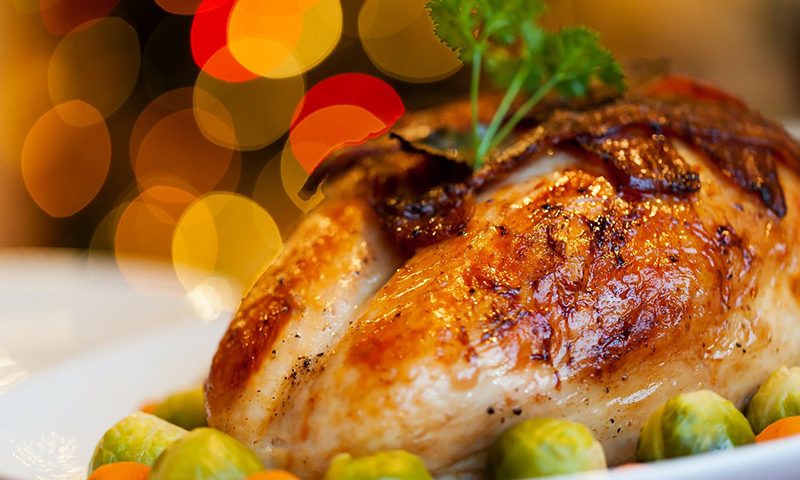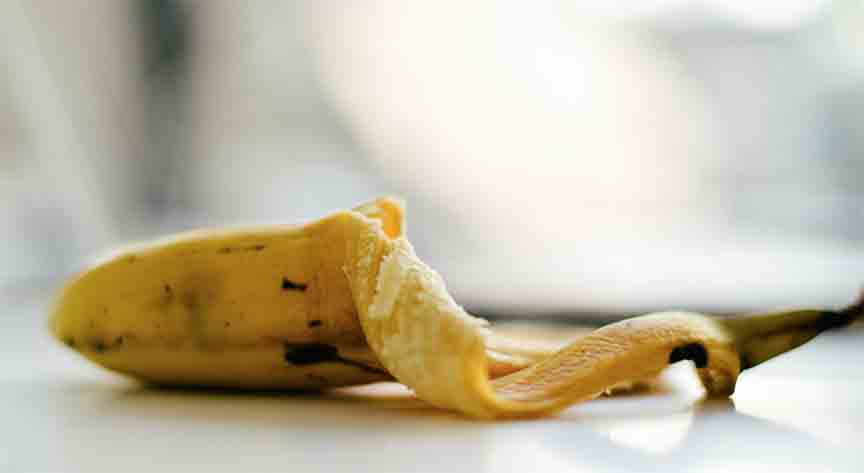
Pumpkin Mousse
September 26, 2017
No-Bake Pumpkin Swirl Cheesecake
November 1, 2017Compiled by JOSEPH BROWNSTEIN and ABC NEWS MEDICAL UNIT
Everyone’s talking about national health care, but national holidays are, unfortunately, part of the problem. They add to the obesity epidemic.
Everyone knows Thanksgiving can undo a diet. So how to make sure there isn’t more of you around the middle to be thankful for after the holiday?
Read on for some tips.
One obvious possibility is exercise. Nutrition experts advise working out on the days before and after Thanksgiving, and, if possible, on the holiday itself. Taking a walk before or after dinner can help shed pounds. One can play a little touch football before sitting down to watch the game.
“Thanksgiving is the absolute must-be day where everybody should be exercising. Everyone should go for a big walk after Thanksgiving dinner. It’s not optional on Thanksgiving,” said Dr. Jana Klauer, a Manhattan physician who is a research fellow at the New York Obesity Research Center at St. Luke’s-Roosevelt Hospital.
On the food side, health-conscious hosts may avoid serving fatty dishes, but you can’t control that if you’re a guest at someone else’s house.
You can take at least one step before the food arrives, when you are offered drinks.
“Get your enjoyment from the food and keep that alcohol piece smaller,” said Connie Diekman, director of university nutrition at Washington University in St. Louis.
On Thanksgiving, she said, many of the foods served are unique to the holiday. “Spend your calories on those things that you may not see until Thanksgiving.”
Over the years, the ABC News medical unit has spoken with many health experts about the potential pitfalls of the holiday meal for someone who wants to diet. This year, we present a complete guide to having a healthier Thanksgiving meal.
Turkey
The turkey is the centerpiece of the traditional Thanksgiving dinner, and while it certainly isn’t the unhealthiest item on the menu, it does its fair share of damage to dieters.
While the first turkey decision many Thanksgiving diners face is white meat or dark meat, both can be part of a healthier meal.
“I really don’t think it makes that much of a difference. There’s a little bit more fat in dark meat. Some people avoid that and only eat white turkey meat, which I really don’t understand,” said Klauer, explaining that the difference is minimal, so people should select their meat based on taste.
More important, Klauer said, “You should take off the skin, because the majority of fat is in the skin.”
Preparation counts too, since adding butter or certain gravies to the turkey will raise its fat content, no matter what type of meat you’re eating.
“Calorie-wise, most of the turkey meat is going to be lean enough that the concern shouldn’t be there, it should be with the gravy that you might smother it with or the sides that are really packed with calories,” said Diekman.
“You want to use good things when you cook it — herbs and vegetables and a thoughtful preparation,” said Klauer.
A serving of turkey is four ounces, so four to six ounces may be a wise limit, but turkey is probably not the biggest concern at the Thanksgiving table.
“I think it’s better if you’re indulging, even overindulging, to have a bit too much turkey than too much mashed potatoes,” said Klauer.
For those who prefer to forgo the Thanksgiving turkey entirely, Dr. Neal Barnard and Sarah Farr of the Physician’s Committee for Responsible Medicine wrote a 2007 column for this site about an entirely vegetarian Thanksgiving.
Stuffing
Often going from the turkey’s insides to ours, stuffing may be the number one culprit behind holiday weight gain.
Stuffing can be so unhealthy that Keith-Thomas Ayoob, an associate clinical professor of pediatrics at Albert Einstein College of Medicine, devoted an entire column to discussing its potential downsides.
“There’s also no better name for this dish,” he wrote. “First, it stuffs the bird, then it stuffs our bellies, then it stuffs our thighs. A culinary trifecta if there ever was one.”
“Stuffing is often the most calorically expensive side dish you’d ever imagine,” Ayoob wrote. He said fattier versions can contain up to 500 calories per serving.
He included a number of suggestions for a healthier stuffing, including leaving out the meat, using chicken stock (adding it slowly) instead of fat, putting small amounts of butter on the surface of the stuffing before cooking, using regular bread in place of corn bread, and adding vegetables like celery, onions, apples or pears to the dish.
One other way to make stuffing healthier is not to stuff it into the turkey. It’s leaner if cooked separately.
And one of his suggestions, for those who cannot do without stuffing and can’t control how it’s made, is to treat stuffing like dessert, since it has the calories of one.
“Save the best for last,” wrote Ayoob. “Before you dive into that single portion of tasty but calorie-laden stuffing, hit the turkey breast and veggies first.”
Potatoes
Whether sweet, mashed or baked, potatoes are a fixture at virtually every Thanksgiving dinner, but some varieties are far better for losing weight or keeping it off than others.
“When you eat a potato, you’re actually getting more sugar, more glucose, than if you ate table sugar,” said Klauer.
The reason, she explained, is that table sugar, or sucrose, is roughly half fructose and half glucose, while potatoes have a much higher concentration of glucose, which goes directly into the bloodstream when ingested.
Take it easy on the portions, she said — large amounts will increase blood sugar.
“What you want to do is don’t have a whole lot of potatoes,” said Klauer.
She also recommended sweet potatoes and Yukon Gold potatoes, because they don’t need as much added for flavoring.
“If one is making sweet potatoes, you don’t need a lot of stuff with it,” said Klauer, noting that they are high in vitamin A as well.
She suggested cinnamon and ginger as healthy flavorings.
“What I would not suggest people do is put marshmallows on top,” she said.
When it comes to mashed potatoes, “What I would suggest, when you make the mashed potatoes, is make the Yukon Gold potatoes and use fat-free buttermilk,” said Klauer. “They’re very light and airy.”
For those willing to go a little more off the traditional Thanksgiving menu, Klauer recommended substituting quinoa for potatoes, as it can be made with herbs into a very filling dish.
Vegetables
Vegetables are always recommended as a healthy part of a balanced diet, but that doesn’t mean that any dish with vegetables is a healthy one.
Dishes that include vegetables can also include heavy amounts of cream or butter for flavoring, adding copious amounts of fat to the vitamins and minerals.
“When one does that, either with canned soups or too much cream or butter, what you’re doing is defeating the benefit that the vegetable has to your body,” said Klauer.
“A lot of these recipes came about in the 1950s, 1940’s, when we had a lot of canned food,” she said. “We didn’t know what we know now about foods.”
Vegetables can, of course, be part of the plan for a nutritional Thanksgiving meal, as can any healthy option you can make yourself.
In 2004, Molly Kimball, a sports and exercise nutritionist at the Ochsner Clinic Foundation in Harahan, La., recommended that if you want a diet-friendly Thanksgiving meal, you “offer to bring a healthy dish such as a salad or vegetable, so that you know you’re guaranteed to have at least one healthy option available to you.”
Diekman said that ideally, two-thirds of the plate should be filled with vegetables and whole grains — which can be provided by the stuffing if it is made right — with the other third devoted to meats and sauces. Following that rule of thumb, she said, keeps the plate — and, therefore, the meal — balanced.
Cranberry Sauce
Cranberry sauce is another fixture on the Thanksgiving table, so it might be reassuring to know it has some health benefits.
The sauce, however, can be laden with too much sugar — though cranberries do need some.
“Cranberries themselves are very tart; generally, you need some sugar in the cranberry sauce. I don’t think that’s a bad thing,” said Klauer.
“I would suggest people make their own, and involve the children,” she said, in order to get a sauce with better taste and nutrition.
Klauer said her own recipe that she has sent to patients includes orange zest and walnuts.
In advocating homemade cranberry sauce, she uses an argument familiar to any chef who has advocated for fresh ingredients over preserved ones.
“Why would you get some in a can if you can make your own?” she said.
Pumpkin Pie
Some of the desserts served on Thanksgiving can be found year-round, but pumpkin pie is a fall tradition.
Fortunately, it also presents less of a challenge nutrition-wise than other desserts.
“If you love the pumpkin pie, either take a small wedge or consider just eating the filling. The crust is where you get a lot of your calories,” said Diekman.
So, for lovers of the dish, there is good news — the consensus seems to be that you can make space for a piece of pumpkin pie on Thanksgiving.
Back in 2006, Ayoob pointed out that it almost seemed the agriculture department had Thanksgiving in mind when it set its guidelines, since the pie falls in line so well with allowances for discretionary calories.
For the more health-conscious pumpkin pie lover, Dr. David Katz, director of the Prevention Research Center at the Yale University School of Medicine, and his wife, Catherine, contributed a healthy recipe for the dish to ABCNews.com back in 2007.
Desserts
Pumpkin pie may be the most recognizable Thanksgiving dessert, but people are forgiving when it comes to adding variety to the end of the meal.
Brownies and pecan and apple pies are also familiar Thanksgiving desserts.
Despite the filling meal beforehand, Katz said people can typically find room for dessert, even if their explanation of where they found that space doesn’t mesh with medical science.
And unfortunately, not all desserts can be as calorie-friendly as pumpkin pie.
“Probably the biggest challenge for a lot of people is the dessert piece,” said Diekman, explaining that the calories can’t be avoided in pecan, cream, and mince-meat pies by simply not eating the crust.
But rising to the challenge doesn’t necessarily mean skipping dessert, since some indulgence is allowed on a special occasion.
“If dessert is a key part of Thanksgiving for you, don’t skip it,” said Diekman.


